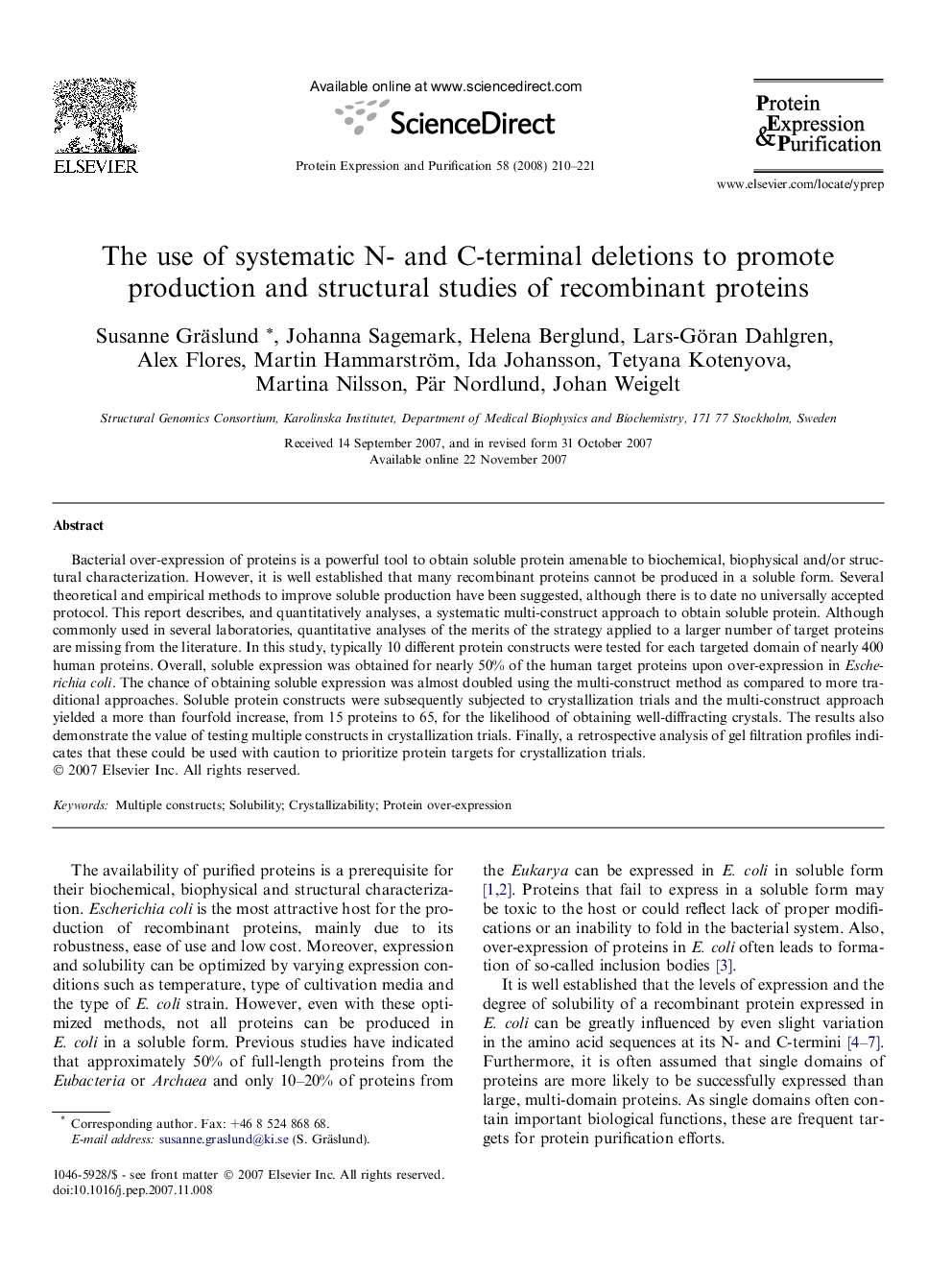| Article ID | Journal | Published Year | Pages | File Type |
|---|---|---|---|---|
| 2021648 | Protein Expression and Purification | 2008 | 12 Pages |
Bacterial over-expression of proteins is a powerful tool to obtain soluble protein amenable to biochemical, biophysical and/or structural characterization. However, it is well established that many recombinant proteins cannot be produced in a soluble form. Several theoretical and empirical methods to improve soluble production have been suggested, although there is to date no universally accepted protocol. This report describes, and quantitatively analyses, a systematic multi-construct approach to obtain soluble protein. Although commonly used in several laboratories, quantitative analyses of the merits of the strategy applied to a larger number of target proteins are missing from the literature. In this study, typically 10 different protein constructs were tested for each targeted domain of nearly 400 human proteins. Overall, soluble expression was obtained for nearly 50% of the human target proteins upon over-expression in Escherichia coli. The chance of obtaining soluble expression was almost doubled using the multi-construct method as compared to more traditional approaches. Soluble protein constructs were subsequently subjected to crystallization trials and the multi-construct approach yielded a more than fourfold increase, from 15 proteins to 65, for the likelihood of obtaining well-diffracting crystals. The results also demonstrate the value of testing multiple constructs in crystallization trials. Finally, a retrospective analysis of gel filtration profiles indicates that these could be used with caution to prioritize protein targets for crystallization trials.
